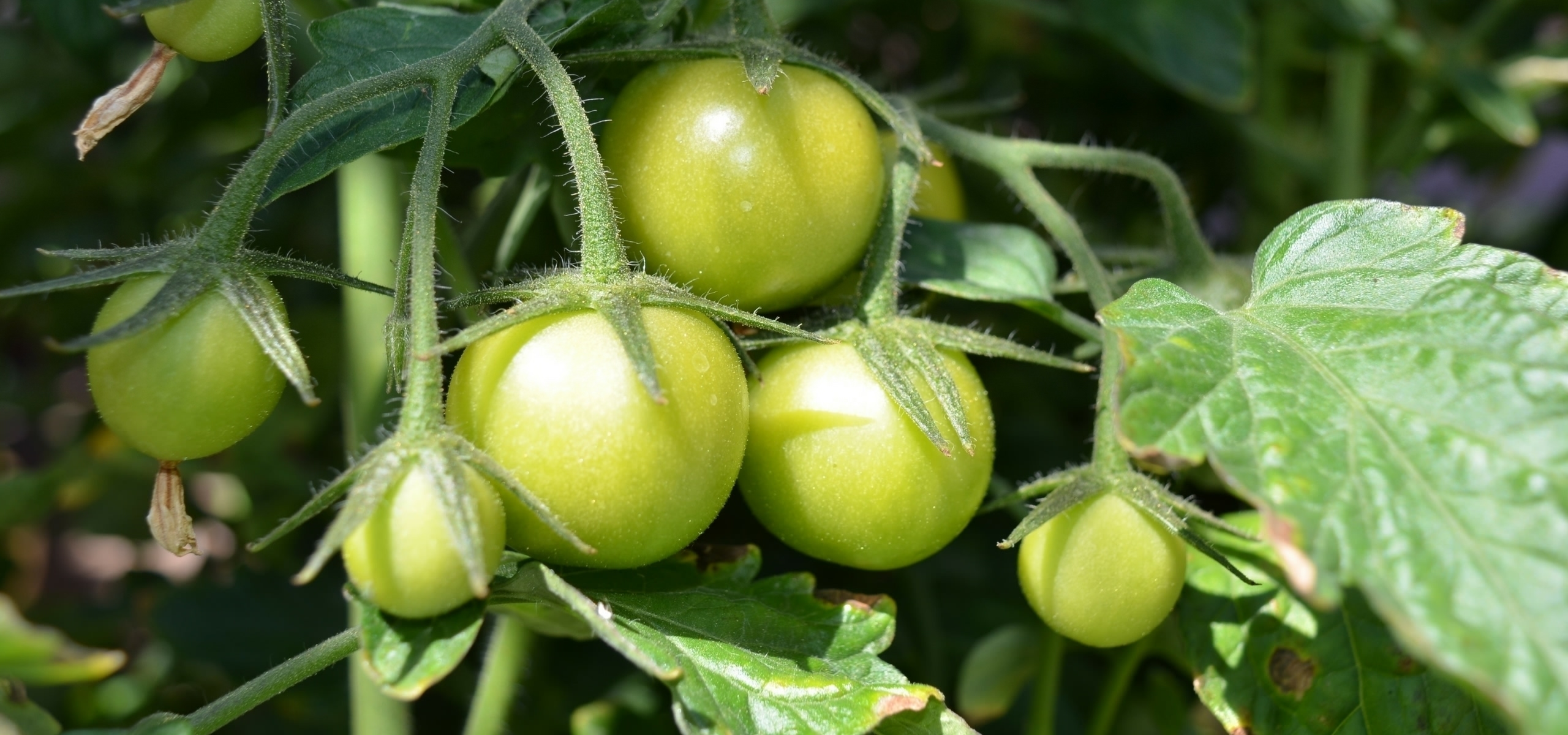
Tomato pruning and management
Classic method
Contents
The pruning of tomatoes concerns varieties with indeterminate growth and large fruits. Cherry tomatoes and compact varieties with determinate growth may not require pruning. This practice is coupled with a solid staking of the plants.
Let’s recall what the terms indeterminate and determinate growth cover:
- Indeterminate growth tomatoes keep growing. As long as the climatic conditions allow (temperatures, sunlight), they continue to grow, elongate, flower, and bear fruit. This type of growth concerns the majority of varieties, whether they bear large fruits like the Supersteak tomato or cherry-type fruits like ‘Black Cherry’.
- Determinate growth tomatoes are bushy. They are more compact and are genetically programmed to produce a certain number of flowers and then fruits, and stop growing when this “quota” is reached. This is the case with the Roma VF tomato, for example.
→ Also read: the pruning of summer vegetables
Why prune tomatoes?
The main objective of pruning tomatoes is to obtain more homogeneous and larger fruits. This practice also helps to promote the earliest fruits at the expense of late productions that may not have time, under certain climates, to reach ripeness.
Classical pruning also allows for:
- limiting the often exuberant vegetation of the plant to enable more planting in a given space and thus have the possibility to grow many different varieties,
- facilitating air circulation and thereby reducing the risk of fungal diseases, particularly blight (Phytophthora infestans),
- allowing sunlight to penetrate more easily to the heart of the plant and thus speeding up the arrival at ripeness of the fruits,
- simplifying staking which is then carried out on a single stake.
Read also
Building a tomato cage - TutorialHow to prune? Removing suckers
The pruning most commonly involves retaining only a single stem. To achieve this, we remove, as soon as they appear, the leaves that grow in the axils of the young plants that are referred to as suckers. This can be done simply by hand, by pinching, with a knife or with a pruning shear. Tools must always be perfectly cleaned.
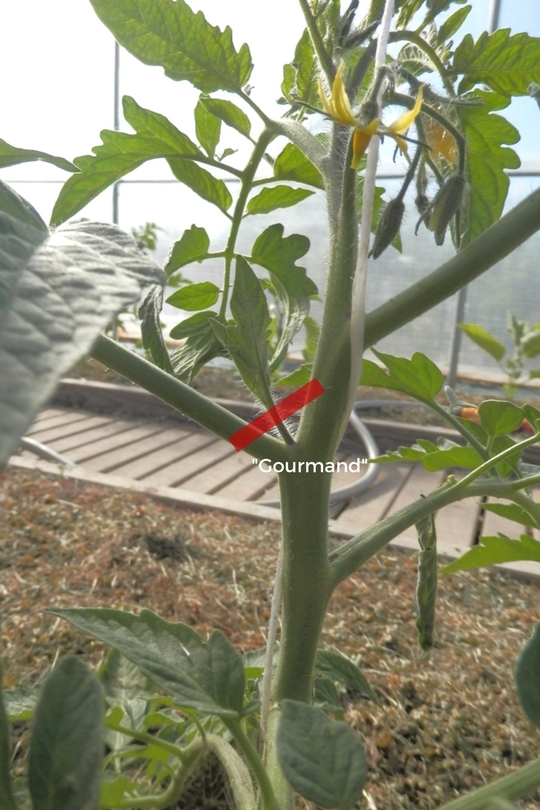
It is also possible to train tomatoes on two main stems. This method is reserved for tomatoes known to be vigorous. To do this, the young plant is topped early, above the first flower cluster. This results in a surge of sap that leads to the development of two strong stems that will be retained. The type of staking will then need to be adapted to support not one, but two main stems.
In all cases and throughout the growth, care must be taken to regularly remove all the suckers that appear in the axils of the branches. It is recommended to intervene regularly to avoid causing too much damage.
Discover our tips in video:
Discover other Tomato seeds
View all →Available in 1 sizes
Available in 1 sizes
Available in 1 sizes
Available in 1 sizes
Available in 1 sizes
Available in 1 sizes
Available in 1 sizes
Available in 1 sizes
Available in 1 sizes
Available in 1 sizes
The Nival Zone and Defoliation
1) Topping
Indeterminate growth tomatoes behave like lianas and, as their name suggests, have a growth that does not stop. This is why topping is generally practiced.
To do this, after allowing the main stem(s) to grow until the 4th or 6th flower cluster (the choice depends on the vigour of the variety as well as your climate), you cut the main stem at its tip to encourage the growth of the lower fruits.
This topping is not obligatory and can also be done at the end of the season, to concentrate the sap flow into the last fruits that have a chance of ripening before the first cold weather arrives.
2) Leaf Removal
Leaf removal for tomatoes is done:
- mainly at the end of summer, on part of the leaves so that the last fruits benefit from maximum sunlight. This action is facultative and may only concern the yellowing foliage,
- but also at planting or during the first few weeks that follow: the leaves located at the base of the plants are generally removed to prevent them from getting wet during watering.
Read also
What to do with green tomatoes?Is pruning tomatoes obligatory?
The classic pruning of tomatoes is not obligatory. Commonly practiced by market gardeners, it is no longer universally accepted among amateur gardeners.
Indeed, removing suckers and cutting thick stems causes wounds that are open doors to diseases. If you have experienced cases of fusarium or verticillium wilt in previous years, it is often wiser to opt for a cultivation method without pruning.
Moreover, through experimentation, many gardeners have found in their vegetable gardens that growing without pruning, in a cage, (see our tutorial), can be just as, if not more productive, simply because axillary shoots, if allowed to develop, also produce flowers and then fruits.
A final alternative is to adopt a gentle approach and intuitive pruning, which respects the natural growth of the plant. It is common for the plants to naturally separate into two equally strong arms: keep them. By planting less densely (60 to 70 cm apart) and planning for adjustable staking (the string system is perfect for this), you can allow your plants to develop reasonably, while removing a few “suckers”. From experience, we assure you that the harvest will be just as abundant!
- Subscribe!
- Contents































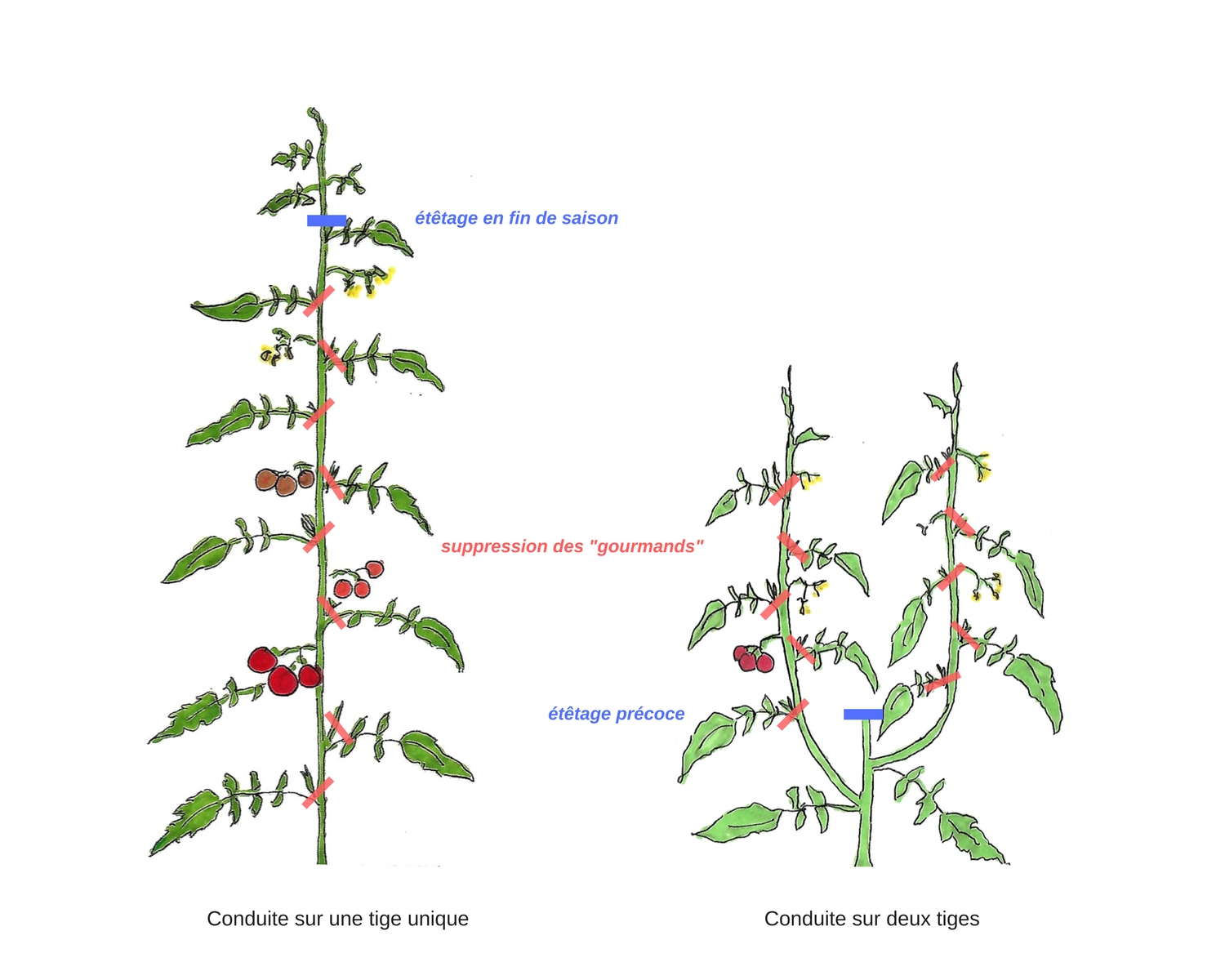
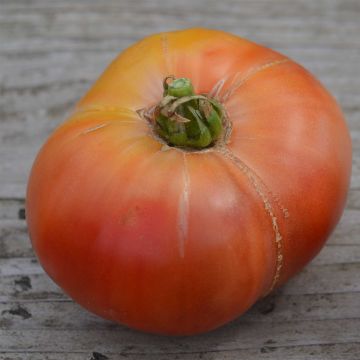
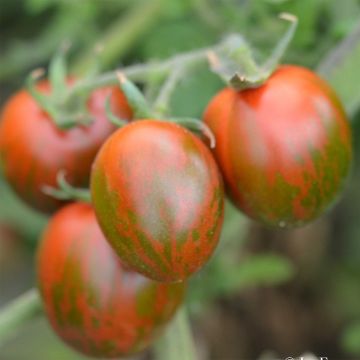
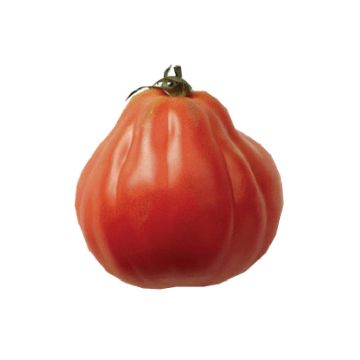
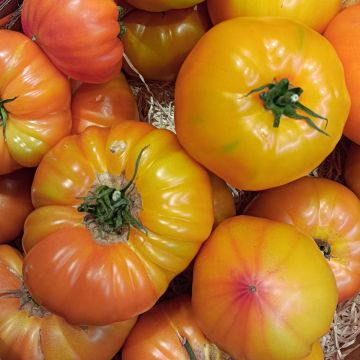
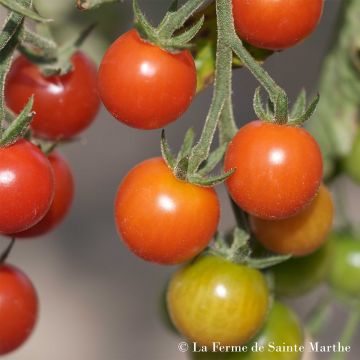
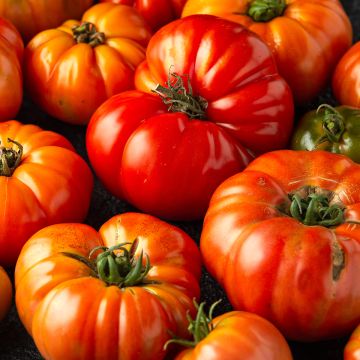

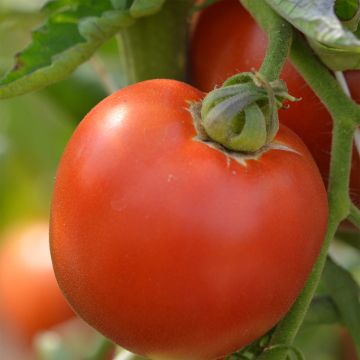
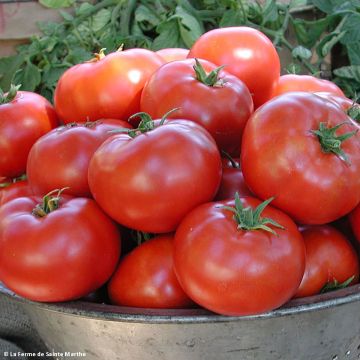
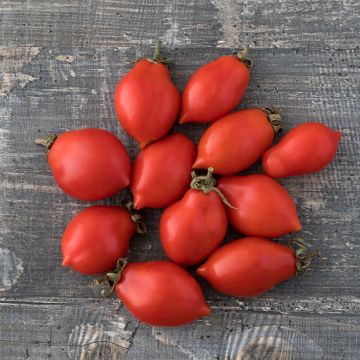
Comments